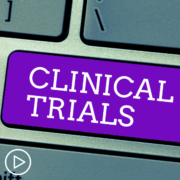What Head and Neck Cancer Treatment Side Effects Can Be Monitored via Telemedicine?
What Head and Neck Cancer Treatment Side Effects Can Be Monitored via Telemedicine? from Patient Empowerment Network on Vimeo.
For head and neck cancer patients, which treatment side effects are acceptable to be monitored via telemedicine? Watch as expert Dr. Samantha Tam from Henry Ford Health System explains vital aspects for monitoring treatment side effects, key symptoms for patients to report, and some patient monitoring methods that are helpful in care.
See More From The Head & Neck Cancer TelemEDucation Empowerment Resource Center
Related Resources:
Transcript:
Samantha Tam, MD, FRCSC, MPH:
One of the most important aspects in terms of treatment side effects is understanding what the patient feels with regards to their symptoms and reporting this to the physician. Something that we’re using at Henry Ford currently is remote patient-reported outcomes measurement, which looks at several domains of symptomology that we are monitoring throughout your treatment. These questionnaires can be completed online remotely at home, and don’t necessarily need an in-patient visit. This is a platform that can be utilized to communicate with providers in order to understand what the treatment side effects might be, and also a standardized way to discuss with your physician exactly what kind of side effects you might have from treatment.
So I think it’s important to be a self-advocate for your care, and so certainly as a provider, I’m happy to hear any kind of concerns that you have about side effects from treatment, pain, bleeding. I think one of the big ones is whether or not you’re doing well with swallowing and how your weight has been. Energy level is another major indicator about how much you’re able to take in and how well you’re tolerating the treatment. All these types of components are important things for us to know throughout your treatment course, and I think speaking up about any kind of concerning symptoms you have is important for your provider to know so that we understand exactly what’s going on.













